I’m finally getting around to posting ‘part two’ of the Jordan Lake outing mentioned earlier, which is not the Jordan Lake outing from yesterday, which yielded only cruel juvenile woodpeckers. I had to split up the photos because there were too many, and so we get to the more specific topic of raptors.
The outing started out with a lot of promise, given this appearance within ten minutes of arrival.
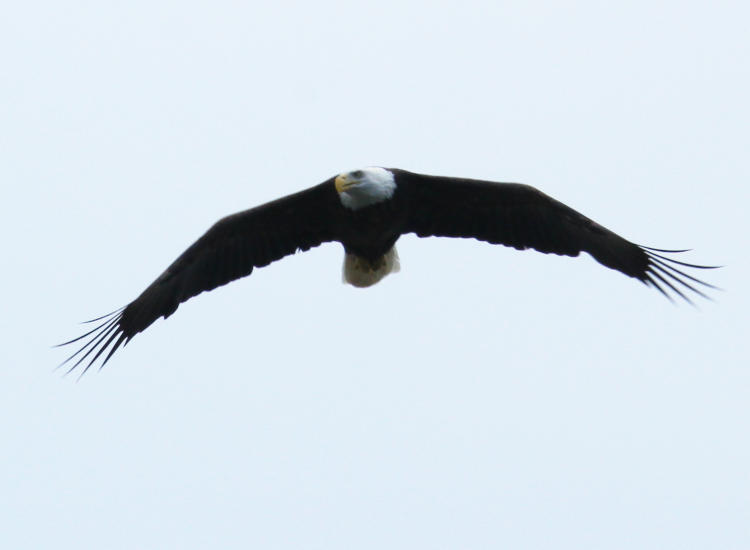
I don’t even have to tell you this is an Haliaeetus leucocephalus, what the great unwashed know as a “bald eagle,” and better than four years old because anyone can tell you it’s a bald eagle, meaning it has its post-4-year white head and tail, unlike the next couple that we’ll see. Unfortunately, even though it passed directly overhead, it did so from the direction of the blerk-y sky and thus is far from an impressive frame. It gets a little better.
Not two minutes later, we could see others wheeling nearby, seeming to stay in the immediate area (meaning within a few hundred meters, which is close in regard to circling raptors.)
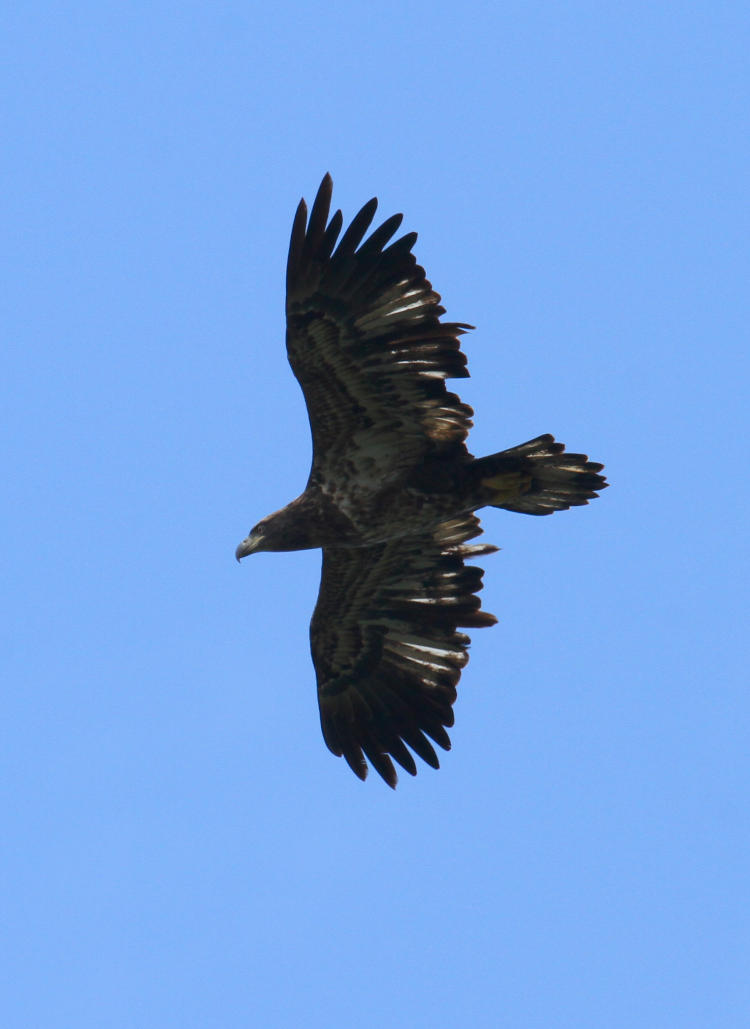
This is a first year juvenile eagle, again distinguished by the coloration, but undergoing a molt which has left the trailing edges of the wings completely ratty-looking – no, this was before the hurricane and not evidence of any form of distress. You can determine this by the uniformity: birds tend to molt their feathers in matched pairs, left and right, to avoid uneven lift, so when you see shorter feathers that match on both sides, the bird is only molting.
Since they tended to disappear behind trees in their circles, the fact that there were two the same age could easily have been disguised, if it wasn’t for the non-matching conditions of their wings

Siblings? Possibly – certainly this year’s brood, and they were hanging out together in harmony, so this seems likely. But this one has wings that largely look the way they’re supposed to, and by that token appears healthier to us, even though this is meaningless.
We’ll take a moment to feature the other two raptors photographed on this outing, because they did nothing of interest.

This is a red-tailed hawk (Buteo jamaicensis,) probably a third the size of the eagles even though it’s the largest of the hawks in the area (the vultures outclass them though.) Something doesn’t seem quite right about the coloration and I suspect this is also a juvenile, though redtails can display a lot of variation in adult plumage, so I’m not committing to this and want to keep things casual. The day was quite windy with strong updrafts, so even the lazy redtails could soar with little effort.
It disappeared over some trees and, a few minutes later, this one appeared from the same general area
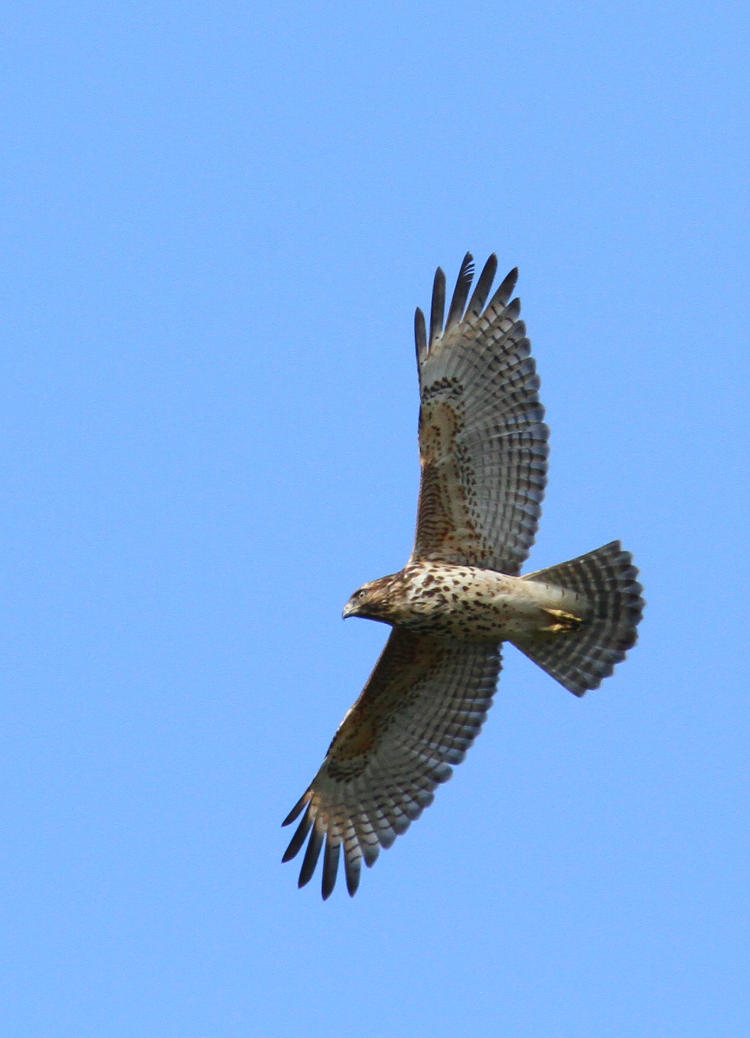
This, however, is a red-shouldered hawk (Buteo lineatus,) slightly smaller and more energetic than the redtails, but not by much on either account. You can distinguish them in flight by the lack of a dark ‘belt’ band across the belly that the redtails have, and the even barring on the undersides of the wings and tail. You can also distinguish them by call, since redtails have that ubiquitous single ‘eagle scream’ used in every movie and TV show, while redshoulders have a repeating, wailing call, even though it’s nearly the same pitch. Before this appearance, I had heard the calls of a redshoulder and suspected a territorial dispute, though this one seemed to be hunting and not fleeing or pursuing, so who knows?
That’s all I got for the other species, so now back to the eagles.
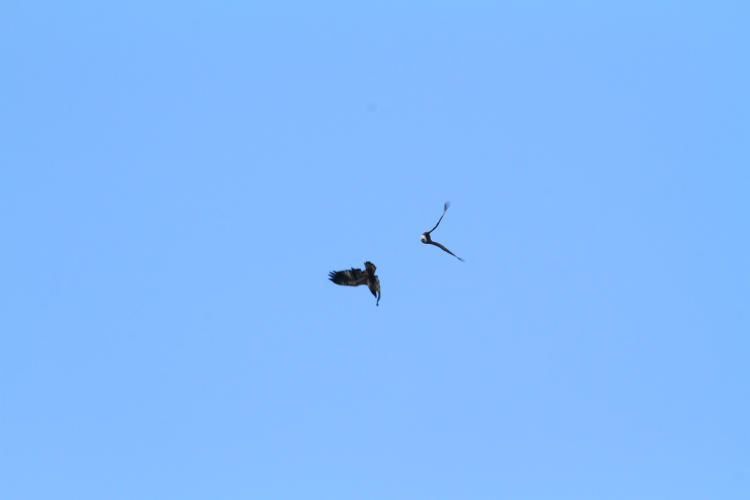
At one point, an adult and the molting juvenile engaged in a wheeling encounter in the air, appearing to chase one another – this can take a little time because such heavy birds don’t twist and dive like smaller birds might, but adjust flight paths in their circling to intercept one another, so even an antagonistic encounter might not appear so at first. This is the full-frame version of one close pass, but we need to go in tighter.
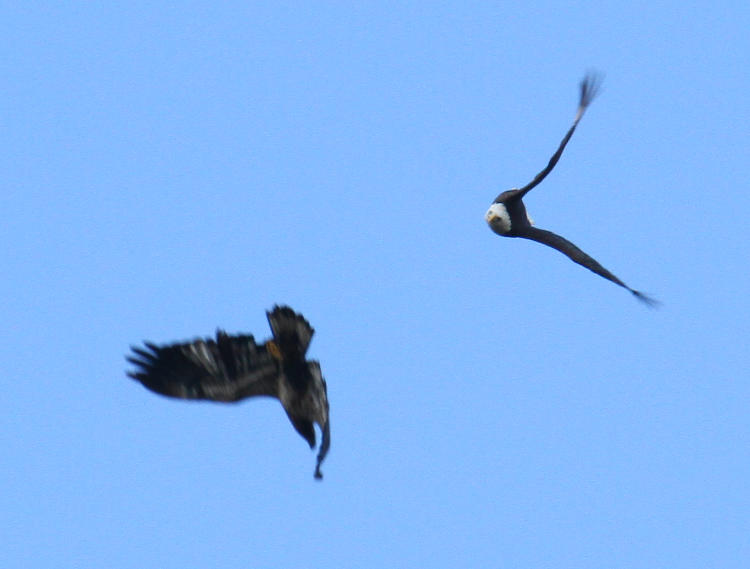
The notable thing about this was, neither had their talons extended as they might in a true territorial dispute, and the juvenile certainly didn’t vacate the area under this provocation – it seemed more like they were playing, though I have no idea if they even do this. Was this a parent ‘priming’ their child for potential aggressive attacks from others? Given the age disparity, I can’t believe it’s linked to mating behavior. Any ornithologists are welcome to weigh in.

Seven minutes later, the same juvenile was still wheeling around nearby, and this time the talons were visibly dangling, something that they typically do when about to descend for prey. Yet it wheeled around several times without descending or retracting the talons, and I wish I had a better photo of this from the side where they were more visible, but focus had wandered too far off for those frames and I won’t show them or even admit that I have them, so you’ll have to compare this with other photos above. Eventually, however, it seemed to commit and I tracked the descent, though the only good frame came after the capture.

Ya gotta admit, that’s not too shabby given the distance, which was better than 50 meters. While osprey will slam into the water and then launch themselves back out of it, I’ve only ever seen eagles do a running surface snag, getting nothing more than their feet wet, and one of these days I’ve have the rig dependable enough to capture this on video – it’s in process, even as I type this, but all will be revealed when it’s a working system.
Overall, I’m pleased with the day’s haul, and it keeps raising the bar for further efforts. You’ll know when I’m successful.
















































